

Marvel Comics Presents ran for 175 issues from 1988 until 1995. Each issue included four eight-page stories with typically two or three on-going features (and no ads). It spotlighted some of the leading creators of mainstream comics over a period of precipitous economic growth and even more rapid decline. Reading through it is an opportunity to revisit any number of weird aspects of 90s superhero comics. This blog is a primitive, oddly regimented, manifestly scattershot crawl through an often disappointing but occasionally splendid comic. All image copyrights are Marvel's. Issue credits linked below. Updated on Wednesdays.
Marvel Comics Presents #23: Early July 1989(2.26.20)
Credits: grandcomicsdatabase
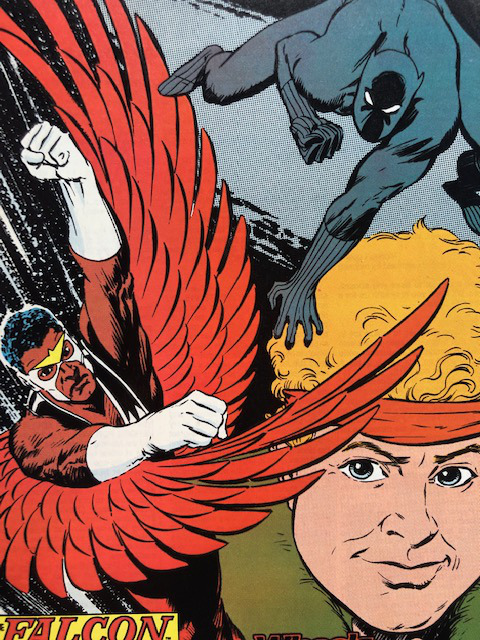
Blevins contributes a strong cover with a Jansen-like openness and heavy blacks to amplify a grotesque hive of Servitors. The rear is a mess, though, with shoddy jam piece cohesiveness, a distressingly goofy Wolfpack character, and a conspicuously under-inked Black Panther. The tagline for the Falcon story--"Cracks Down on Crack!"--is unforgivably of its time. The letters page is starting to feel closer to substantial and includes what seems to be a continuing stream of complaints about Leonardi's art from the completed Colossus feature. In some way, I take these complaints as evidence that Leonardi was ahead of the curve style-wise.
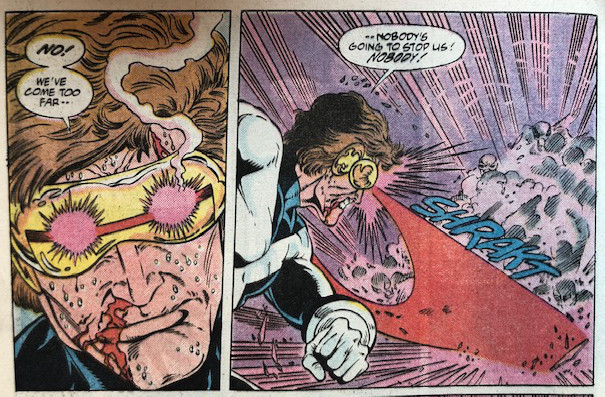
A. Cyclops, "The Retribution Affair" [7/8]
The role of Conscience finally comes into the frame with a last-ditch effort to merge his mind with Master Mold's as the central thrust of this installment. The pace has quickened and, for all the concerns about dialogue and Callisto's continued gratuitous presence, Harras has at least kept things moving. In contrast to a wealth of mid-distance action shots, Lim runs heavy on close-ups throughout this issue.
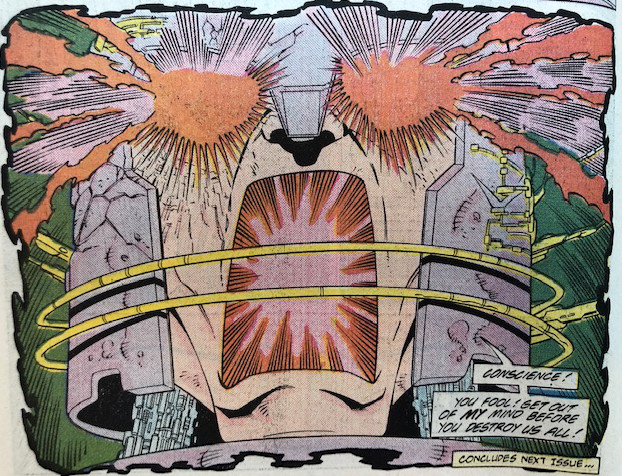
It makes for a "high energy" Cyclops and Mold and some nice design, but things quickly veer into the disembodied and ungrounded. (This trend will amplify and arguably peak with Liefeldian totally decontextualized fight books which were just around the corner.)
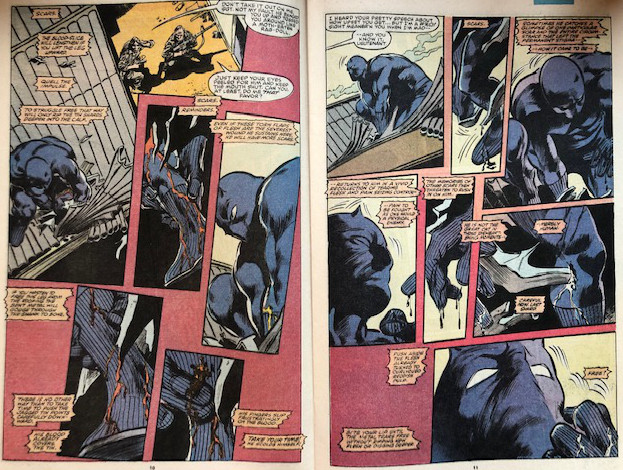
B. Black Panther, "Panther's Quest" [11/25]
The most varied installment in a considerable stretch is highlighted by some crafty and effective layouts and some understated touches by Glynis Oliver. The last six episodes have deepened T'Challa's physical trauma and the thread is magnified with a sustained, gorey stretch of shattered paneling as T'Challa tries to extract his mangled leg from a broken tin roof. There's palpable discomfort here and Colan communicates it nicely. Less clear is why we then pivot to T'Challa recuperating in his jet. Even so, Oliver nicely shifts the mood with sedate blue hues that offset ambient lighting from a range of viewing screens. It's understated, commendable work with a more episodic feel than has been typical in this story.
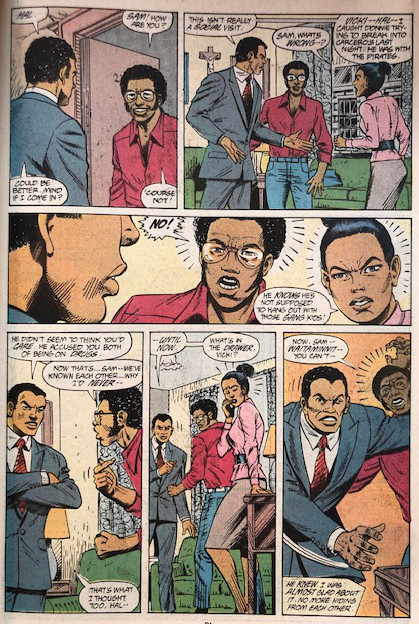
C. The Falcon, "Forest for the Trees"
Fabian Nicieza surpasses issue #11's trite D.A.R.E. silliness and compounds it with the offensive "moral" that even seemingly respectable black parents might well be secret crack addicts. Even if you think it's commendable to engage "social issues," if your message is that drugs are a problem only for black communities, any potential merit vanishes, overshadowed by woeful racism.
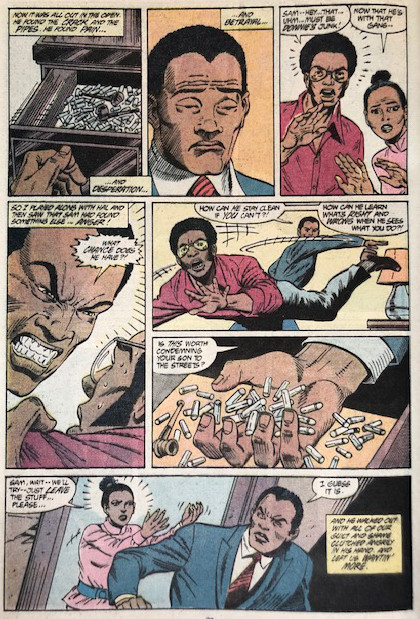
Cockrum gets penciller credit, but it's clear that many disinterested hands are involved.
Note, too, the explicit and capital 'P' problematic remark regarding how black superheroes like the Falcon are solely in the business of battling street level crime rather than, say, Galactus.
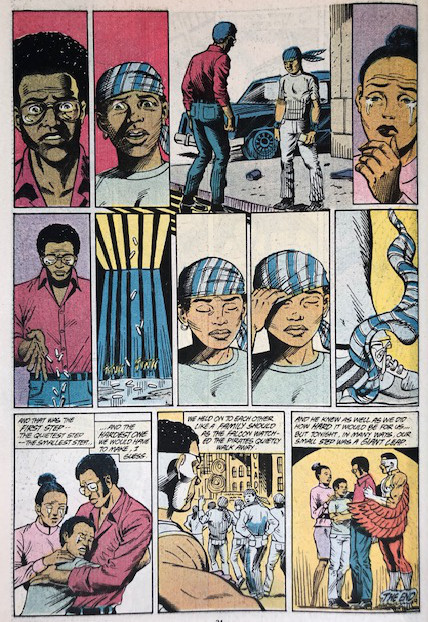
For some scholarly discussion of patterns of portrayl of black superheroes and, in turn, supervillains, see Phillip Cunningham's nice paper, "The absence of black supervillains in mainstream comics." This was a pile of ill-conceived racist dreck. A genuine stain on MCP's history.
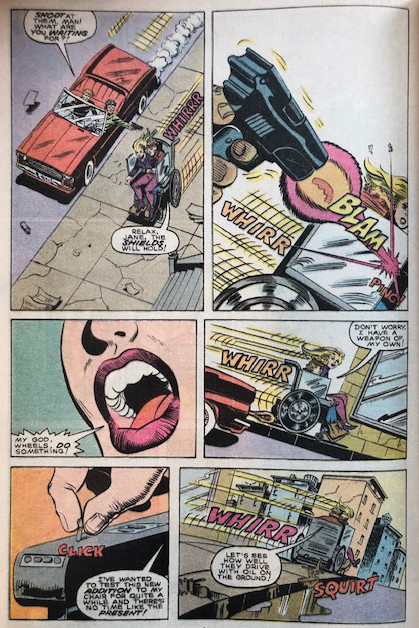
D. Wheels of Wolfpack, "Lady Jane"
MCP's second Wolfpack feature has Wheels utilizing his wheelchair in a kind of James Bond homage to save a pretty girl from a gun-toting, drug-dealing playground bully. The tonal incoherence isn't helped by Ron Wilson playing most panels for pratfall-style goofiness. The broader idea of injecting Archie visual design and G.I. Joe storytelling into a 'relatable, urban youth environment' is so bizarre that there's no easy way to digest this installment. Given the staggering failure of the previous Wolfpack outing, it's clear that the series must have been an interestingly confused failure. I confess to a rubbernecking kind of curiosity.
Power Ranking: Black Panther (B+), Cyclops (B), Wheels of Wolfpack (C), The Falcon (F)